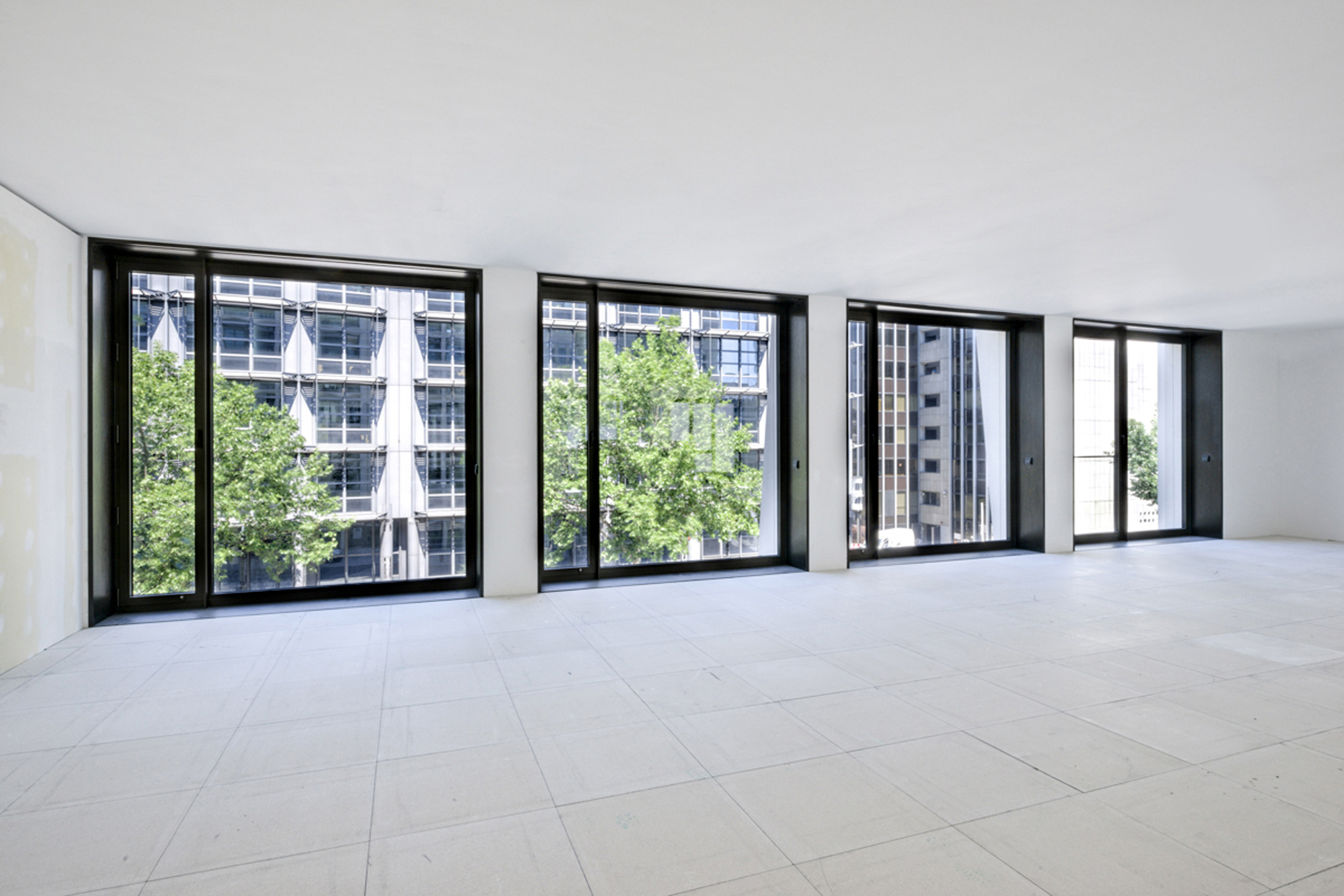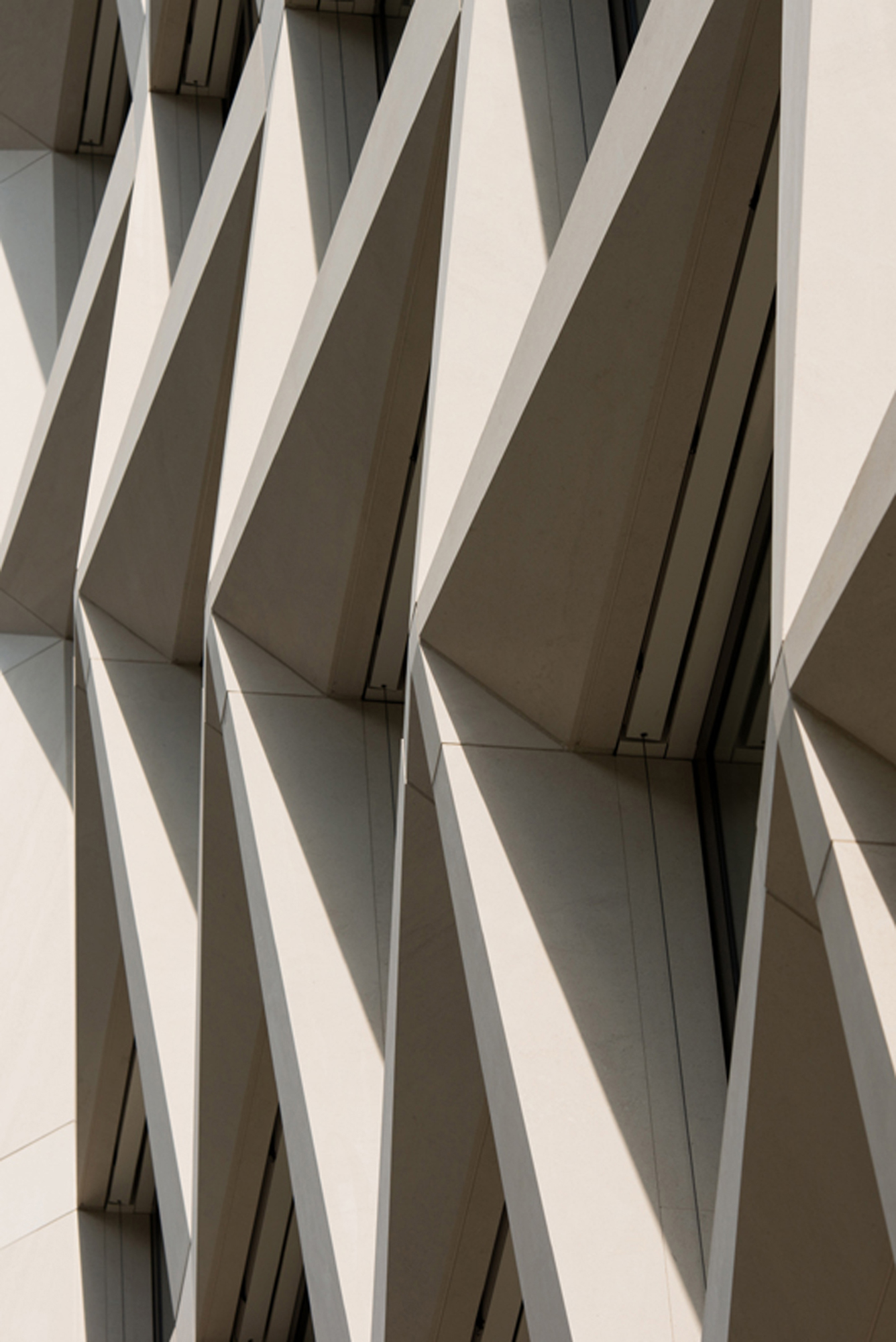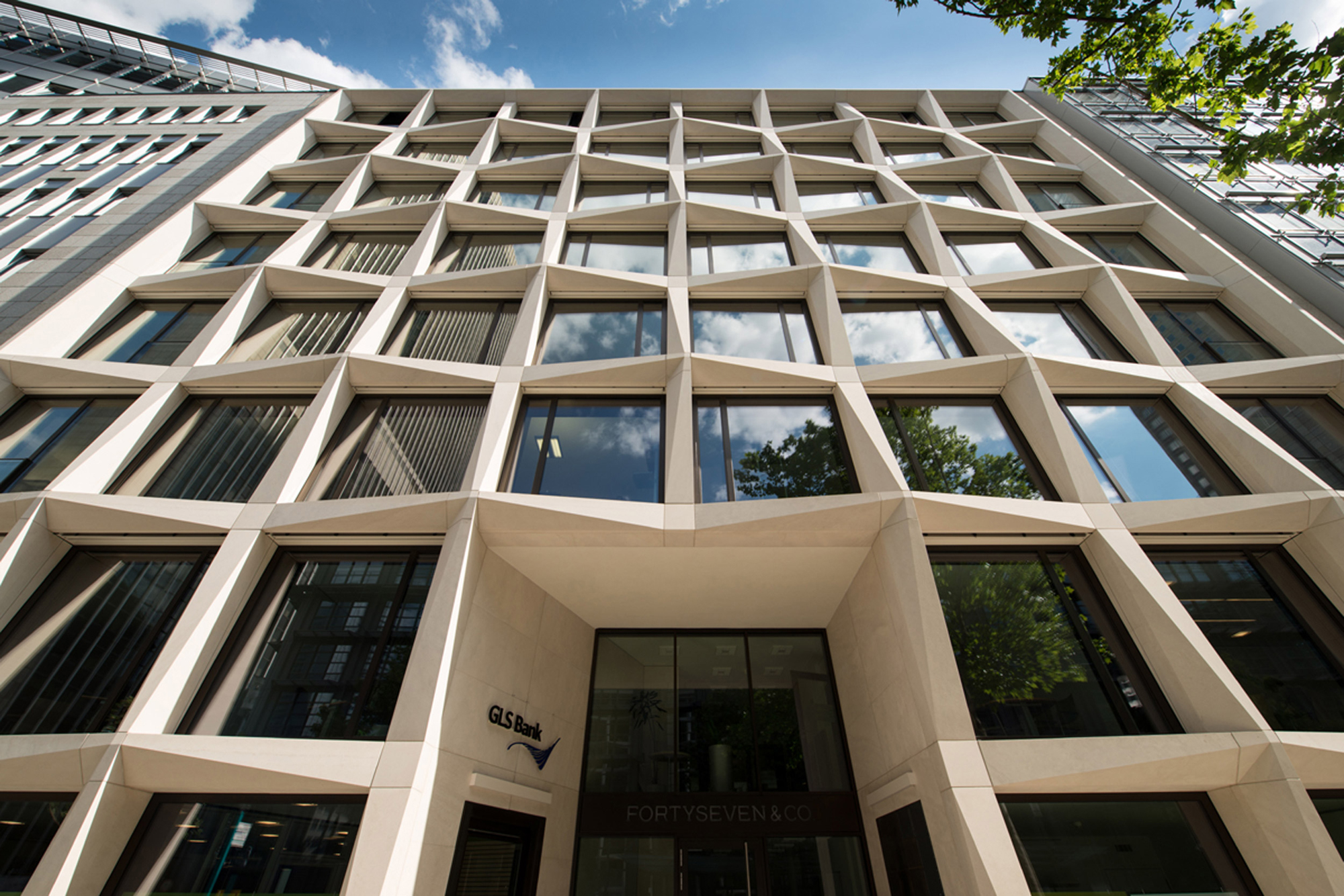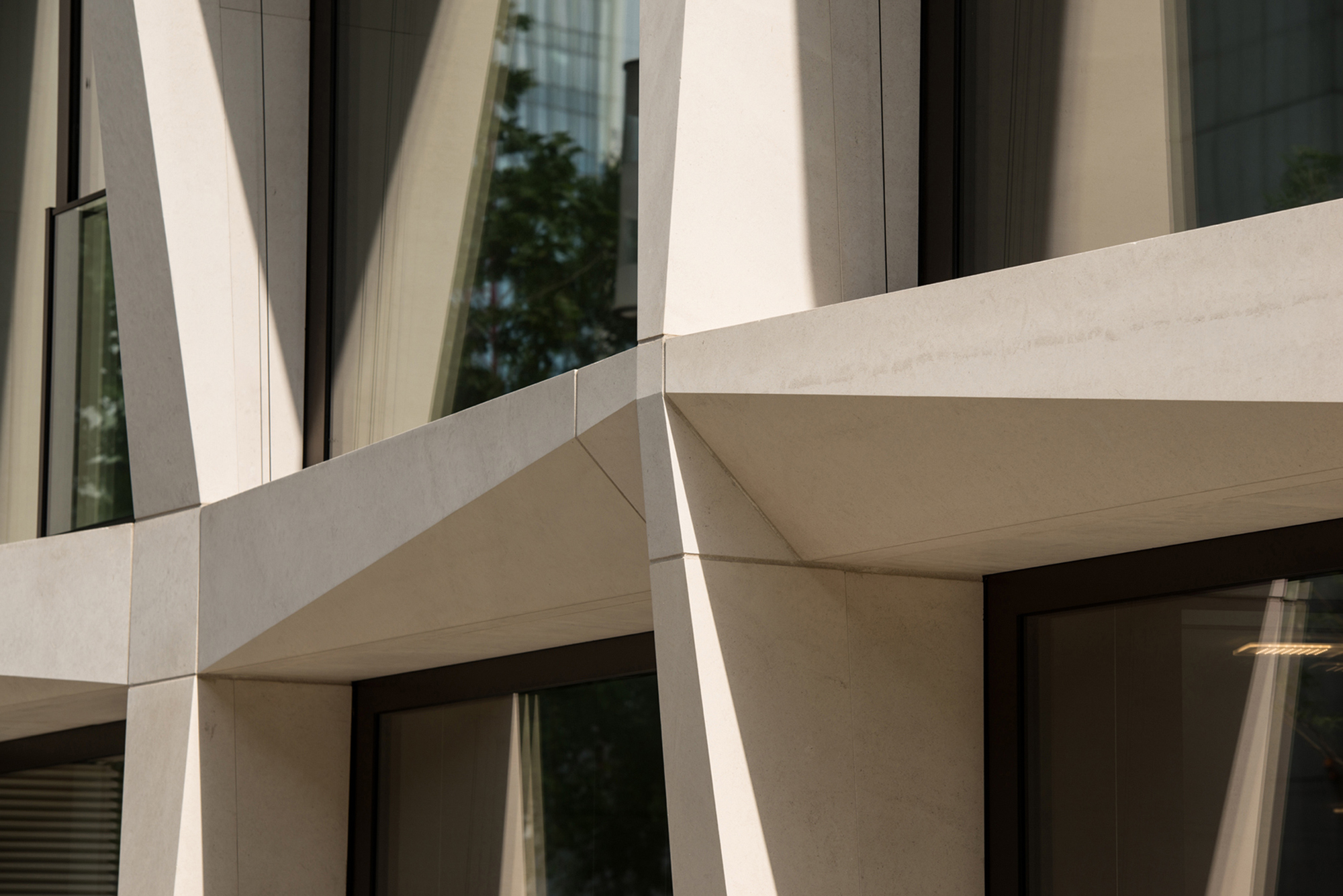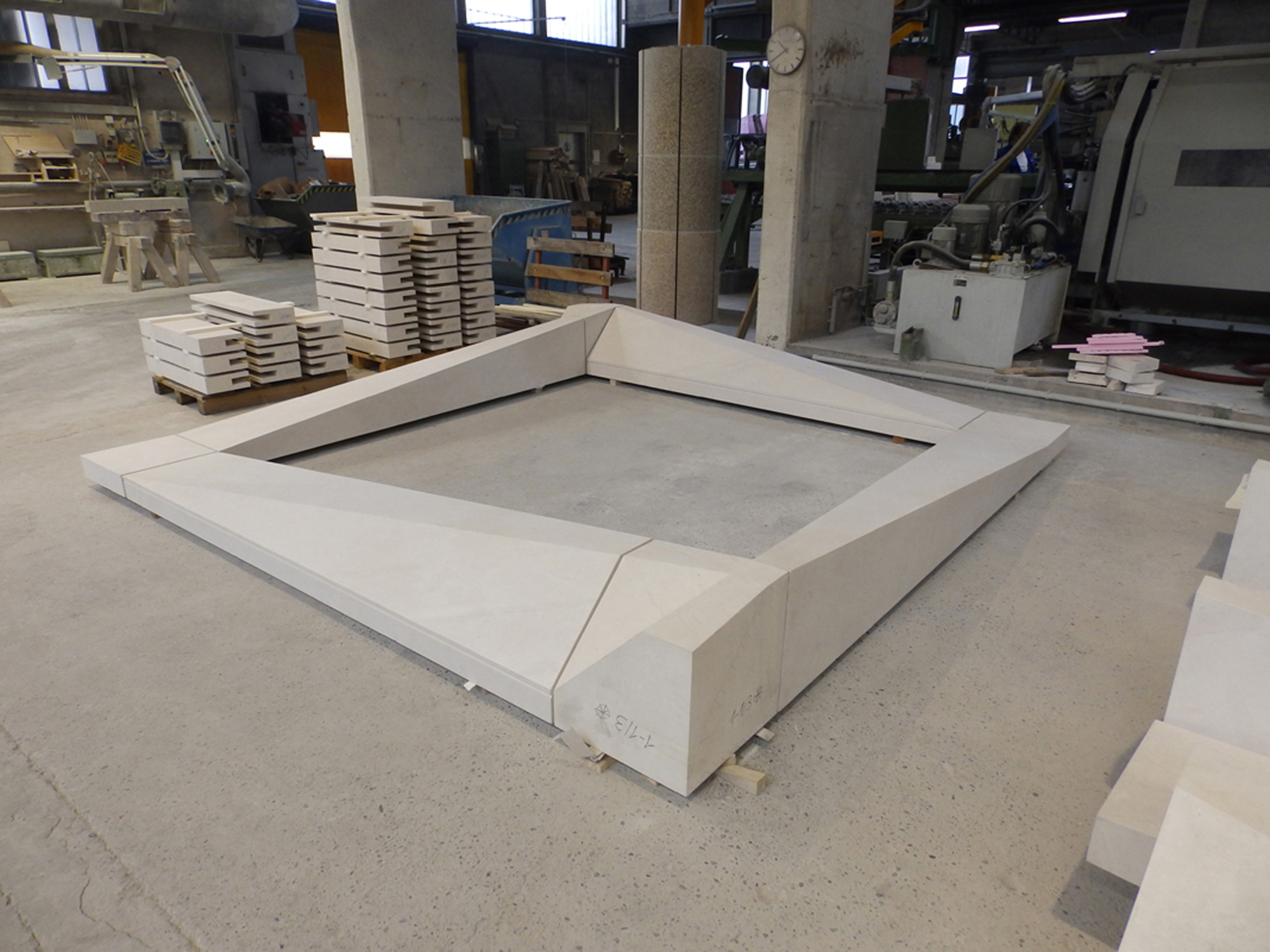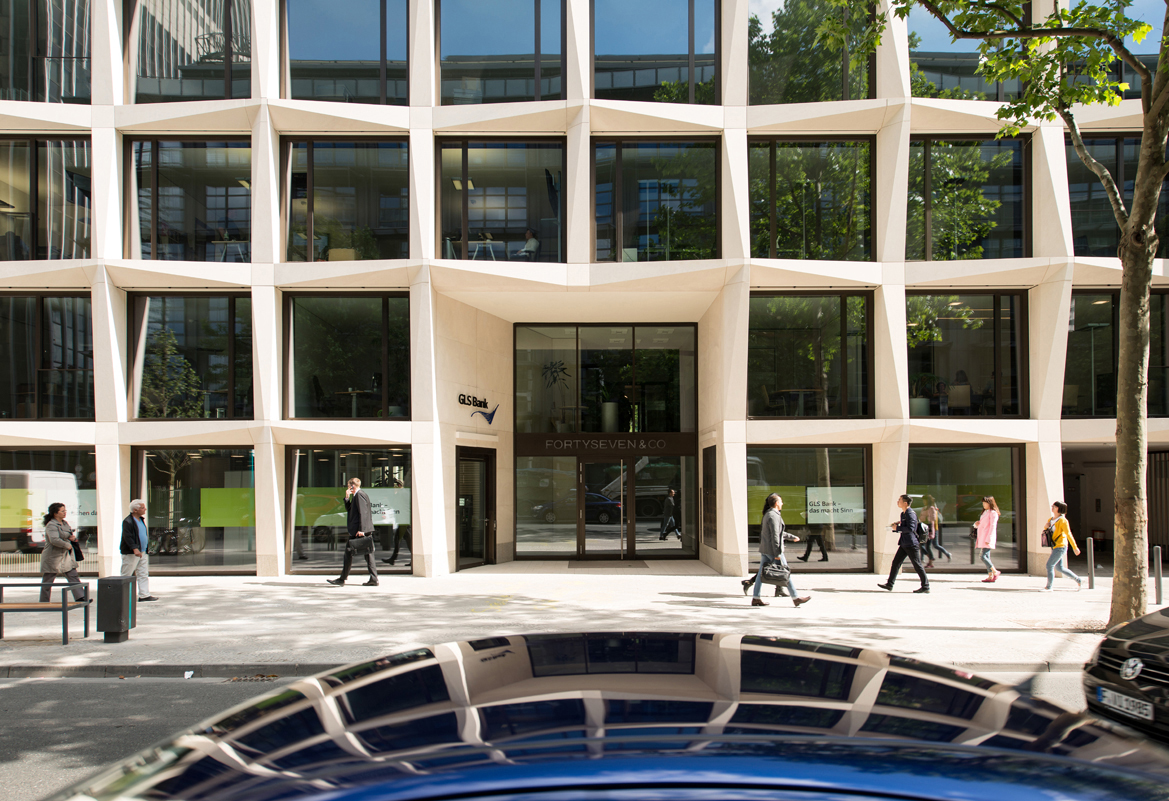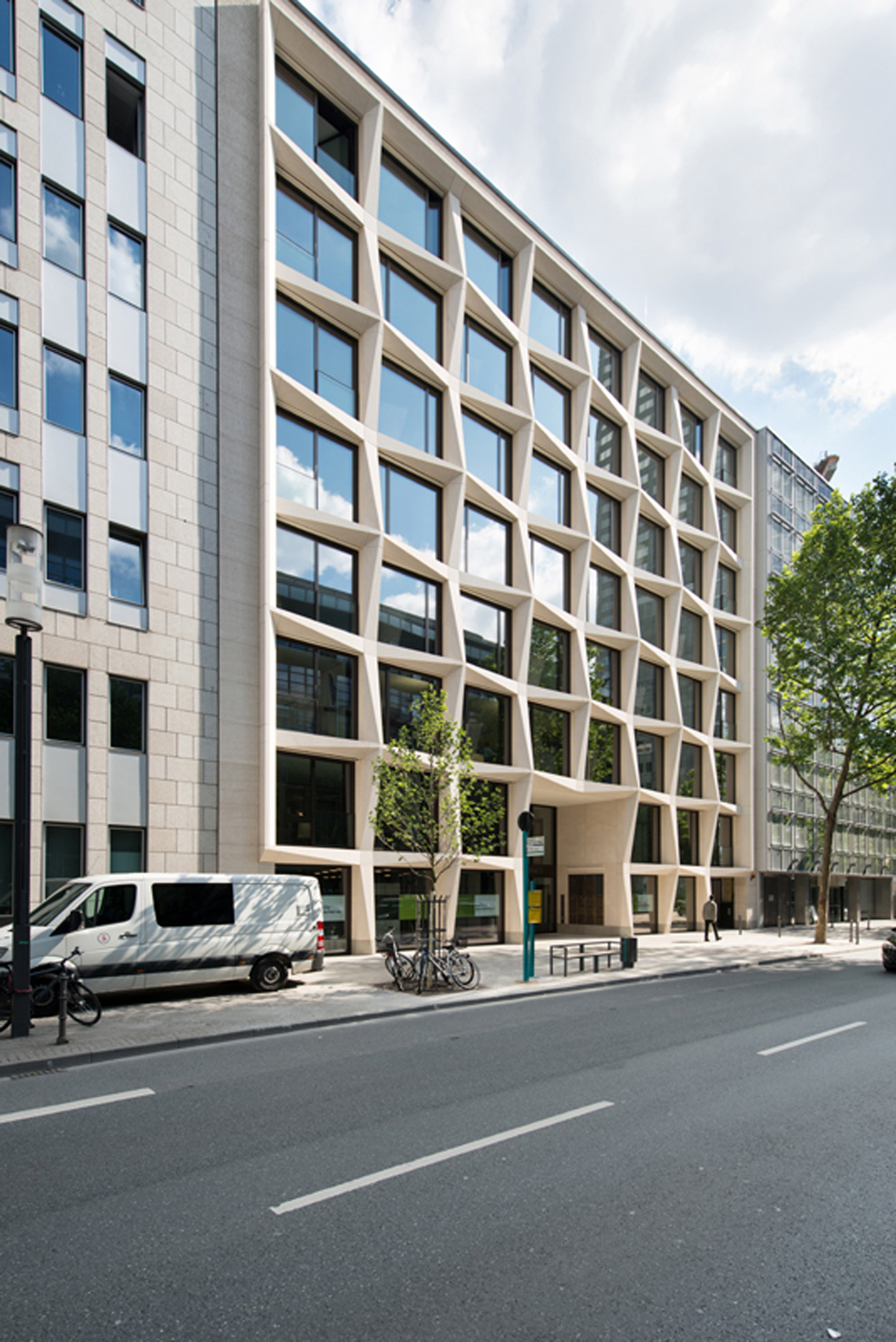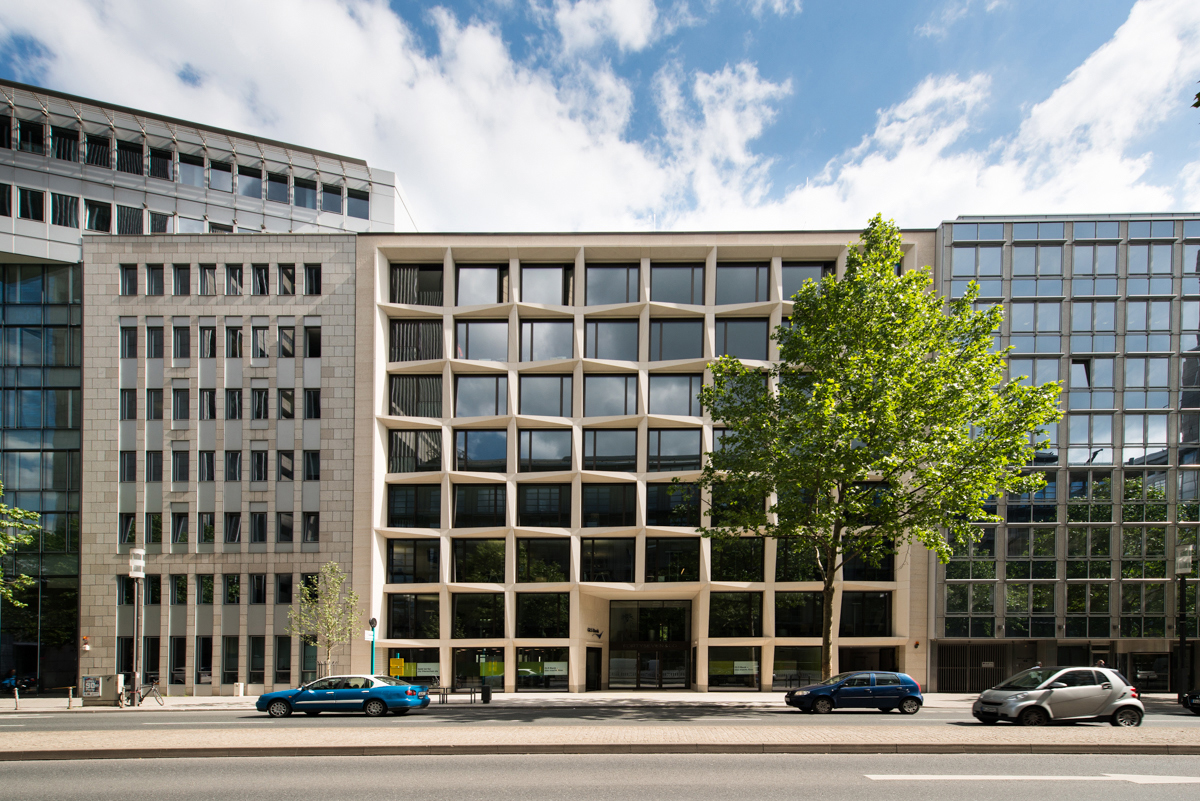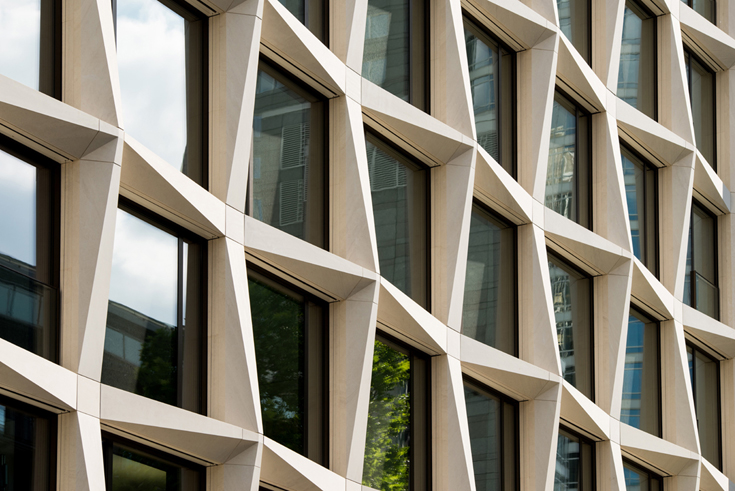Op-art façade effect: Bank building in Frankfurt

Photo: TEK TO NIK - Andreas Stimpert
The newly-built eight-storey office building with a gross usable floor area of approx. 5,226 square metres sets accents in various respects. In comparison to its predecessor from the sixties, it makes an urban design statement with a sculpted façade that consciously refers back to the historicist Frankfurt style. The architects have emphasized the street elevation of the LEED Gold green building-certified edifice by paying attention to the modulation of the façade, giving it an impression of depth and paying attention to detail. As a result, the coherence of the design concept is legible deep into the interior of the respective storeys.
The architecture primarily owes its legibility and quality to the street front modulation into a grid pattern of square 8 x 8 window frames organised in a regular and balanced rhythm that takes its start with the central, two-storey entry porch. Erected in the reinforced concrete frame style, the building has a highly heat-insulated, self-supporting curtain wall, a solution that is unprecedented in Germany in terms of the square window frames, which have been formed out of pure limestone with the help of a special 5-axis machining technique and which are up to three metres long – a length that so far has only been possible with the help of pre-cast concrete parts. The façade has no less than 60 cubic metres of massive natural stone weighing 116 tonnes.
The form language of the 185-square-metre street elevation is determined by the projections and returns of the practically jointless cubist window elements. The logic of the grid pattern that modulates the façade is based on the division of each window into two storeys, whereby the pilasters of four windows form a six-metre high-relief star in which the crossing points also play the role of nodes. The vertical and horizontal pilasters are also diagonally modelled, and cast shade respectively. As the façade faces north, this is a precisely calculated effect, one that lends an additional dimension to the street front.
Depending from where the façade is seen, its modulation creates an effect of movement and constant change in diagonal rhythmic waves. The woven or net-like impression that this creates evokes associations with the vibrating geometric patterns of Op art.
The result is a durable, ecological and economical means of facade design and construction, one that in itself embodies a ground-breaking advance in providing a sculptural quality in urban spaces.
